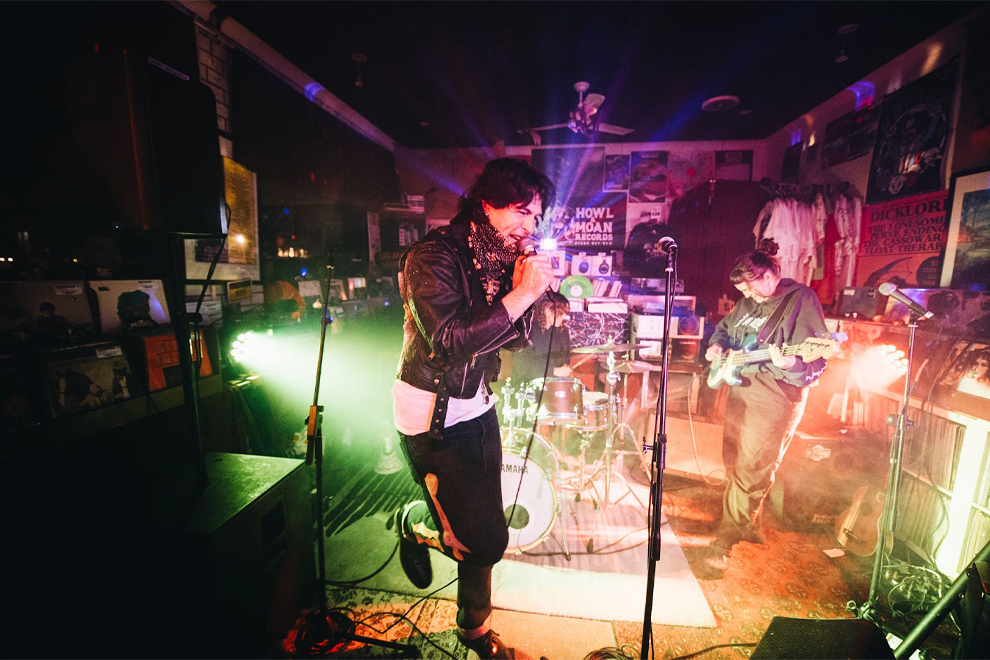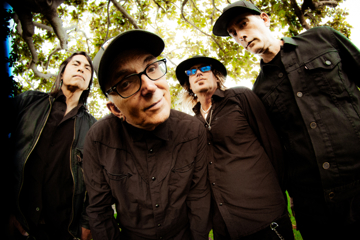‘Amplifying Diverse Voices, Celebrating Identity, And Demonstrating Impact’: Unpacking The Cultural Weight Of Community Radio
Inside the three-year national project mapping community radio’s tastemaker impact on the Australian music industry.

Regional & Remote Music Summit (Credit: Emily Read)
At a time when the scales are tipping to favor digital discoverability, and Australian music faces persistent under representation against the swarms of international imports on mainstream radio, Associate Professor Shane Homan’s keynote at the Regional & Remote Music Summit arrived to help pinpoint what’s happening from inside the belly of the beast.
Presenting early findings from the Community Music Radio: Building The Music-Media Ecosystem project, a three-year Australian Research Council (ARC)-funded study coming to completion this year, Homan painted a timely portrait of a sector that has long punched above its weight, but is now at a crossroads.
The project, led by researchers from Monash and Griffith universities in collaboration with the Community Broadcasting Association Of Australia (CBAA), APRA AMCOS, Creative Australia, and more, aims to quantify the cultural and economic contribution of community music radio to the national music industry.
Methods to achieve this include fieldwork at 10 case study stations, artist and industry interviews, an AMRAP case study, and economic modelling using sector data and listener surveys.
With 450 community stations across the country and close to five million weekly listeners, it’s a network that quietly does heavy lifting in the Australian music ecosystem, and after three years of continuous study from Homan and his team, we’re on the brink of receiving the all-encompassing report within the year. Here’s what Homan had to say of the upcoming report.
Don't miss a beat with our FREE daily newsletter
Talent Waiting To Be Found
As Homan explains, community radio is often the first (and sometimes only) platform willing to back local artists, especially those from marginalised backgrounds.
“Entire programs might be ambient music, local punk, local hip hop, and so on. All the stations offered spaces within their weekly schedule for curriculum that cultivated micro communities,” Homan says.
“Further, one station examined, which was FBi, ensured that their weekly playlist had a 50-50 gender split, while ensuring at least 25% were non-male artists of colour, week in, week out,” he added, also highlighting how broadcasters double as label owners, festival bookers, and gig promoters with real skin in the game.
The role of community radio in artist research and development was echoed through interview excerpts with presenters who spoke about sifting through submissions, prioritising first-time artists, and giving thoughtful feedback – something automation-heavy streaming platforms simply can’t replicate.
“I love getting submissions direct from the artist and I think it’s really important to try and prioritise those as well, especially when people are first starting out,” a qualitative response from the study said.
“Actually getting a response, even if it’s ‘Maybe this isn’t quite our vibe, but please keep us in the loop with what you do in the future’ is really important to make them feel encouraged and welcome and not like they’re just shouting into the void.”
Economic Modelling & Social Impact
One of the project’s more ambitious goals is to assign measurable economic value to the sector using a Social Return On Investment model.
By assessing inputs such as grants, subscriptions, and volunteer labour against outputs including airplay, events, and artist development, the study hopes to quantify the real dollar value that community stations add to the broader Australian music economy – especially relevant given that commercial radio pays a meagre 0.045% of its profits in artist royalties.
While commercial and public radio have historically dominated policy debates, the ARC linkage grant provides long-overdue support to community broadcasters – many of whom are still running on 1980s equipment, often with a volunteer workforce from the baby boomer generation.
As Homan put it, the challenge isn’t just digitisation; it’s about ensuring expertise survives and evolves.
The Streaming Dilemma & Future Of Airplay
In a landscape where YouTube, Bandcamp, and Spotify are now major listening platforms – especially among younger demographics – stations are being forced to innovate to stay relevant. Some, like Perth’s RTRFM, have already been recognised for their efforts, taking home a Streamy award for their digital strategy (and beating out the Lady Gaga in the process). Others are just starting the uphill climb toward online integration.
“Maintaining a human connection between listeners and program hosts while at the same time finding the money to update and provide an online listening experience is also one of expertise.”
With “ageing stations dating back to the 1980s”, and the current airplay royalty rate sitting unchanged since 1985 while streaming brings in new remuneration models, this raises pressing questions that the study is set to explore further.
How can community radio improve discoverability on global platforms? What role should it play in the national digital narrative? And as Australia awaits the outcome of a 2025 Copyright Tribunal case, will the industry finally see fairer airplay royalties?
“Sliding In Plain Sight” & What’s Next
Homan’s keynote wrapped with a subtle warning. Despite its proven value, “the sector is sliding in plain sight in terms of the training, R&D and cultural production managed across localities and industries,” he admitted.
Overlooked in conversations about industry sustainability, often left out of the funding priorities of state and federal governments, and under-leveraged in the country’s music export strategy, there’s definitely pressure on these cultural hubs, and we’ve seen it recently through various fundraising efforts held from the likes of SYN and FBi radio.
Yet, despite these setbacks, community radio remains a crucial conduit for artist visibility, local storytelling, and social cohesion. ”What we're doing hopefully aligns with those key things about amplifying diverse voices and celebrating identity and demonstrating impact,” he added.
As the summit shifted into workshops to close out the 2025 chapter of regional and remote music discussion, one thing was clear: if we want a thriving, equitable music industry in Australia, we can’t ignore the places that have been holding it up all along.
This piece of content has been assisted by the Australian Government through Music Australia and Creative Australia, its arts funding and advisory body








